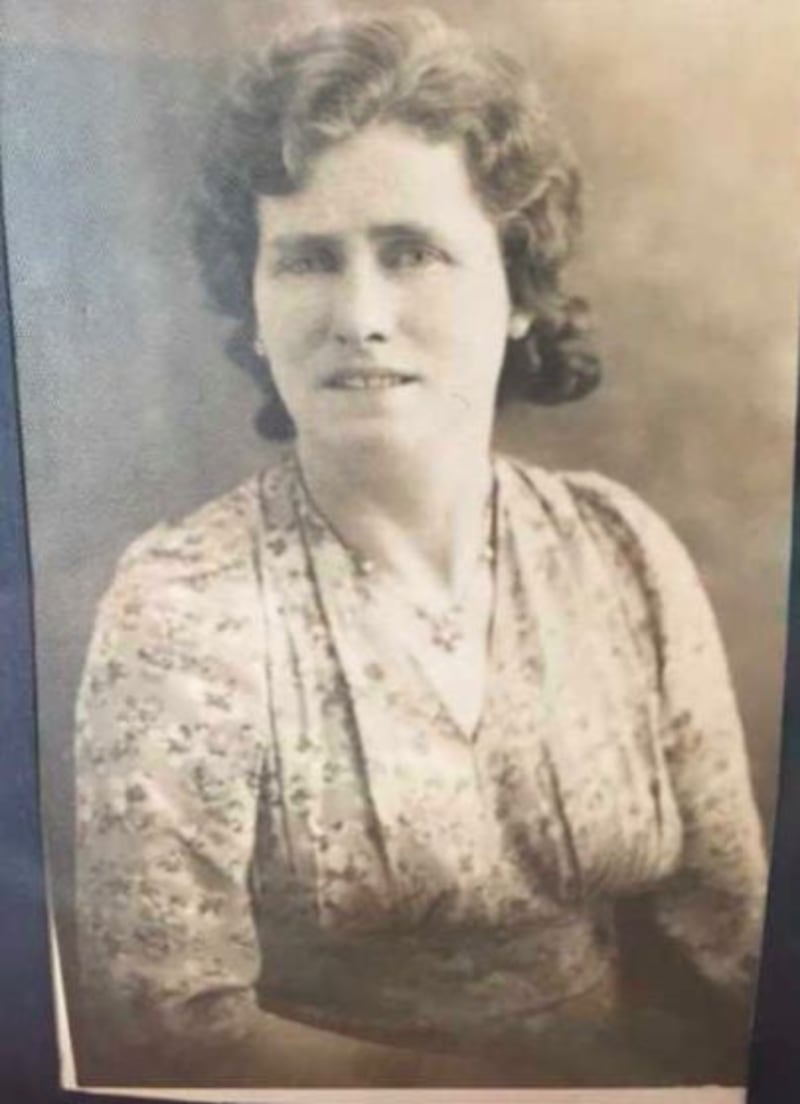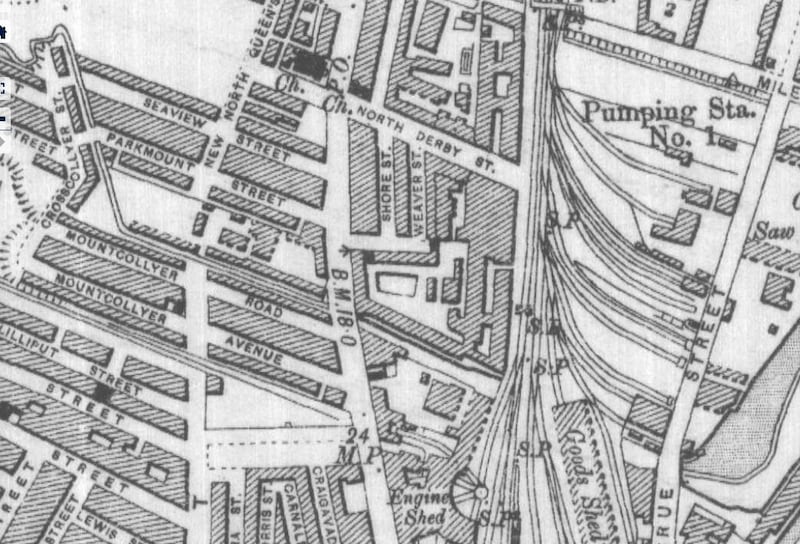The left-wing poet and later diplomat Valentin Iremonger mourns the loss of a young girl caught in crossfire on Easter morning 1916 in an uncollected poem, Legend: “O grief, break membranes. What if the personal loss / Transcends the public disaster?” It is an important question.
In the early days of the pandemic, seeking ways of escape, I began to research my family tree. I found the accordion-playing great-uncles who raided an east Belfast pub during the Blitz, handing out their spoils in the air-raid shelter like benevolent lords.
There was the great-great-great-grandfather Farrelly from Cavan who enlisted in the 10th Foot, and in Britain’s empire-building, breathed the air at all meridians – South Africa, India, Hong Kong, where my great-great grandfather Thomas was born. I recognised familial traits in his professional life, rising up the ranks several times only to be busted back down to private for insubordination. One of his descendants, Patrick J Liddy, would go on to have a more settled military career, though no less eventful: he was legal officer to Irish forces during the ill-fated UN involvement in the Congo.

There were micro-histories of urbanisation: the weaving Rices following the bend of mill rivers, Laurencetown to Castlecaulfield, finally ending up in west Belfast; the huge, long-lived Lundy clan arriving en masse from farms near Ballynahinch to settle in the Short Strand about 1870. Notables emerged through the blur of dates and rented rooms: there was William Lundy, a Bluebeard who married three times, including the maid of honour at his second wedding; like a character from a Ciarán Carson poem, Benoah Wanten, a Belgian horse butcher frequently cited as an innocent bystander in the petty crimes section of the paper (it took me a while to realise that Benoah was probably broad Belfast for Benoît).
More than a few relatives died in the first World War, including my grandfather’s uncle and namesake Patrick Lundy, father of Arthur Lundy, the fiddler depicted on the gable wall of Madden’s pub, and grandfather of Katmandu lead singer Marty Lundy. It was sad to trace the increasing rarity of “mixed marriages” from around the turn of the 20th century, where it had been common before.
So much of life existed beyond these baptisms, burials, minor infringements of the law, but even what was available had gaps, like musical rests: did this uncle die, emigrate, or live a quiet bachelordom with one of the brawling families who were more visible? My father’s family was a particular mystery. His grandfather, James O’Hanlon, a soldier from Armagh, married Sarah Graham, the daughter of a tobacco turner, in St Patrick’s in 1902, but there were no traces of him before the wedding. They had 10 children in total: Nellie, the eldest, born before the wedding, my grandfather Joseph, roughly middle in 1912, and Aggie, the youngest in 1922 – she was the only great-aunt on the O’Hanlon side I remember.
My father is a west Belfast man: the Rices, his mother’s family, lived in Balkan Street. It was a war-scarred family on both sides: my great-uncle Gerard “Bunny” Rice, a local character who receives a patronising mention in Gerry Adams’s memoir, had been in the water at Dunkerque. My grandfather Joe O’Hanlon was in the First Battalion, Dorsetshire Regiment; in 1943, he was injured in Sicily when an army vehicle ran over him camped out in the middle of the night. It left him deaf and blind in one eye, communicating with the family by writing things down on scraps of paper. As an army pensioner, he landed a job as a cleaner in Palace Barracks, Holywood. He was a difficult, damaged man, and he and my grandmother Josie split late in life. He returned to the north of the city, where he grew up, and died in 1988 three years after I and my twin brother were born.

As I pieced together our family’s history, I made a shocking discovery: a sister of my grandfather no one had ever mentioned, Eliza O’Hanlon, had been killed on this day one hundred years ago in the Weaver Street bomb during the most intense sectarian violence Belfast would see until the Troubles. Christened Mary Eliza, she was born in 1909 when James and Sarah O’Hanlon lived on Wall Street, Carrick Hill. The family moved several times in those years, with Sarah’s family on Lepper Street never far away. By 1917, they had settled on Weaver Street, a narrow side street echoing with the clangour of the nearby city saw mill and Milewater Wharf. I learned from local history blog Treason and Felony and newspaper reports the tragedy which happened there a century ago.
On the evening of February 13th, 1922, my 11-year-old great aunt jumped rope in a skipping competition with other children. Partition had been enacted with the Government of Ireland Act 1920, and violence had simmered in the city since that summer, reaching its bloody zenith in the spring of 1922. Until that night, Weaver Street had remained peaceful in the most recent disturbances. The skipping party were gathered on adjoining Milewater Street. The Belfast Telegraph reports a clear, moonlit night, with a nip in the air. About eight o’clock, two Special Constables ordered the children to return to Weaver Street, which they did. A bomb exploded in their midst shortly afterward. My 13-year-old great-aunt Martha, badly injured, described what happened next to a journalist from her hospital bed:
“I was terribly frightened and fell with a lot more. The bomb made a terrible noise, and people were crying and screaming. I did not see anyone as I was too much engaged in the fun of skipping. There were a terrible lot of wounded, and two ambulances had to be got to take us to hospital. My wee sister, who was also wounded, died in this place last night.”
Eliza’s death certificate, signed by the city coroner James Graham, gives as cause of death “wound to abdomen caused by bomb, wilfully thrown by some person unknown”. Four children were killed: Eliza, Catherine Kennedy (15), Ellen Johnston (11), Rose Anne McNeill (13); two adults also later died of their wounds. Many more were injured, including Eliza and Martha’s brother, John Henry.

In the House of Commons the following day, colonial secretary Winston Churchill read out a telegram in which Prime Minister of Northern Ireland James Craig lamented the “dastardly deed” but was largely exercised by the attack on special constables in Clones the previous weekend. On February 16th, the nationalist MP Joe Devlin upbraided Churchill: “They never find anyone. This Government of the combined efficiencies, this Government that is constantly calling upon you to put down the Provisional Government’s inactivity in not dealing with what they call outrages in the rest of Ireland, never find one of these criminals.”
At the City Coroner’s inquiry on March 3rd, witnesses described three uniformed men speaking to two civilians in North Derby Street, which adjoined Weaver Street. About 10 minutes before the explosion, Specials chased the children away from Milewater Street. After the bomb exploded, brief gunfire rattled out. District-Inspector Lynn, on behalf of the police, asked witness Mrs McNeill what she thought the police chased the children away for, if not their own protection, to which she replied she didn’t know. The coroner asked, “Do you not think the police were doing their duty in putting the children away from a dangerous corner?” The witness replied, “You see what good it did them.”
Lynn, asked about the report of the police talking to two civilians at the scene shortly before the bomb went off, maintained that police were confined to barracks that evening, adding that reports in the press of the outrage made a “dastardly insinuation” against the Constabulary. According to Dr Robinson of the Mater Hospital, all four children died from shock and haemorrhage following shrapnel wounds. The coroner instructed the jury to find as to the cause of death, and “in the interests of peace”, let the Home Office hold an inquiry into the police role in the bombing. No inquiry was held.
By May, Catholic families in Weaver Street had fled; a dingy photograph in one of the newspapers shows a dray horse and cart loaded with belongings surrounded by slouched figures as they made their exodus from the area. In the 1960s, the street was demolished to accommodate Unilever and Associated Feed Mills; if you stand roughly where the street was today, you smell the faint mealy aroma from Thompson’s Animal Feed, whose blue and white horse logo was a familiar milestone as a child in the backseat of the car on the York Road.
The O’Hanlon family moved to Exchange Street near the Docks, where my great-aunt Aggie was born later that year, before they finally settled on Lepper Street. I remember Aggie as a tall, white-haired woman with a deep, burbling Belfast accent that disappeared with that generation. She used to say, mock-despairing, “I’ve a brother in the army, one in the navy, and one in the IRA.” My eldest great-uncle, James O’Hanlon, is named in RUC watch lists in the 1930s – I wonder what role, if any, Eliza’s death played in his politics. John Henry (who went by Henry), who had suffered injuries in the bomb, was in the Merchant Navy, while my grandfather enlisted in the army in 1934, and was part of the neverending British counter-insurgency in Waziristan, the area on the border of Afghanistan and Pakistan.
What did they have to say to each other, the elder brother engaged in fighting for Ireland’s freedom, and the younger brother pictured smiling as a member of the victorious Plassey Squad Depot Challenge soccer team? How did the family, in exodus, grieve Eliza? My aunt Maureen had hazy remembrances of the Weaver Street atrocity, but it came as a total surprise to my father. He had a difficult relationship with my grandfather; the war mutilated their relationship as well my grandfather’s body. He has always been vague on family history, whereas every member of my mother’s family leaps out at me in glorious technicolour.
In the decade of centenaries, we are hyper-aware of the danger of forgetting, of the need to memorialise, and I write this to make amends, to remember Eliza and those other casualties of sectarian hatred in 1922 who had no recourse to speak out about what had been done to them. But something nags at me as though I’m missing an important element in that century’s silence surrounding my great-aunt: something damaged certainly, but also proud, private; not stoic; resentful, at the same time forgiving – an act of refusing to speak which was trauma-induced, but necessary to survival.
Weaver Street no longer exists, the children’s laughter and the slice of the skipping rope have long since vanished; there is no place to put up a plaque and forget these children through our obsessive habits of commemoration that collude with obliviousness. I think instead of the children’s jump song and its uncanny reverberations throughout decades in small terraced streets like Weaver Street all across Belfast, east to west, green and orange:
Thorn Rosa slept for a hundred years,
a hundred years, a hundred years,
Thorn Rosa slept for a hundred years,
a long time ago.
Karl O'Hanlon is a poet and lecturer in the English Department at Maynooth University










